MARIANI’S
Virtual
Gourmet
May
16, 2021
NEWSLETTER
ARCHIVE
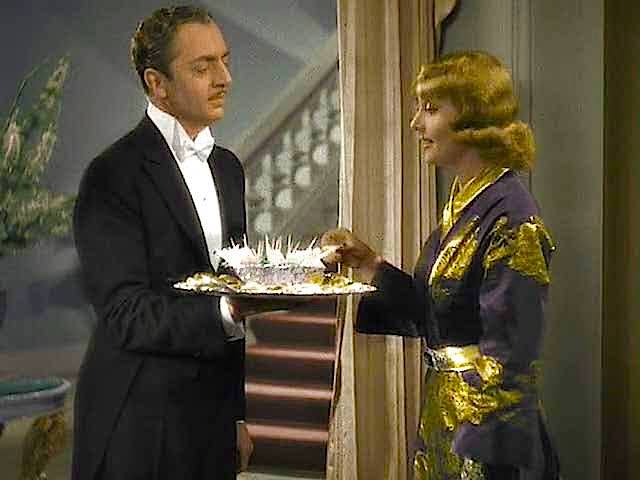
William Powell and Carole Lombard in "Our Man Godfrey" (1936)
IN THIS ISSUE
WHY PARMIGIANO REGGIANO IS
CALLED "THE KING OF CHEESES"
By John Mariani
NEW YORK CORNER
SALINAS TEN YEARS LATER
By John Mariani
CAPONE'S GOLD
Chapter Seven
By John Mariani
NOTES FROM THE WINE CELLAR
BREAK OUT THE WINE AND SPIRITS
AS YOU BRING OUT THE GRILL
By John Mariani
❖❖❖


On Wednesday May 19 on Celebrating
Act 2, I will be talking about "How
Not
to Get Sick While Traveling."
❖❖❖
WHY PARMIGIANO REGGIANO IS
CALLED "THE KING OF CHEESES"
By John Mariani
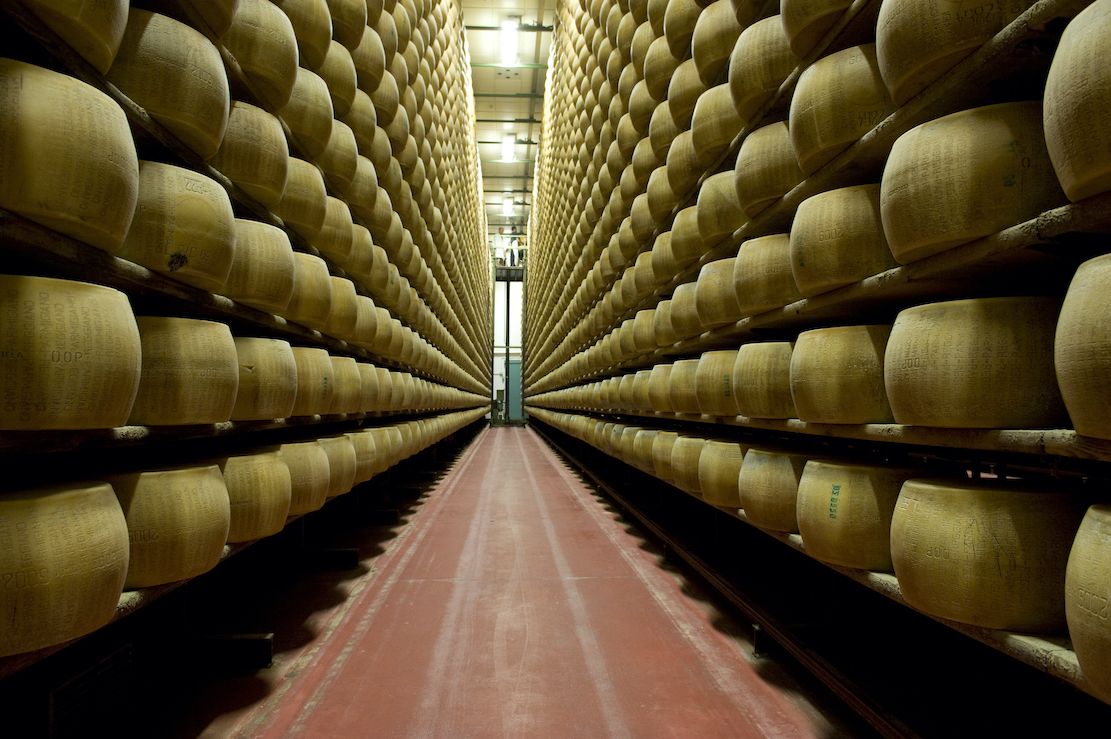
It’s a reasonable question to ask why,
since all cheeses are made from the same
ingredients—cow, ewe or goat’s milk—are there
such myriad differences among the thousands of
types from so many countries. To
find out why Parmigiano Reggiano is
un-reproducible anywhere but around Parma, I
asked Nicola Bertinelli (left), a
producer and President of the Parmigiano
Reggiano Consortium, about the cheese’s
uniqueness.
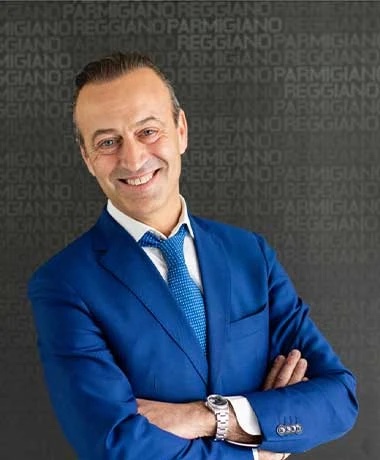
What
are
the elements that make Parmigiano Reggiano
cheese unique and unreproducible anywhere else
in Italy?
Culture and tradition strongly bind
Parmigiano Reggiano to its area of origin,
ensuring that it cannot be manufactured anywhere
else in the world, even if the exact same
production techniques are used. It is first and
foremost a microbiological characteristic that
binds Parmigiano Reggiano to its area of origin
that includes the provinces of Parma, Reggio
Emilia, Modena and Bologna to the left of the
River Reno, and in Mantua to the right of the
River Po.
Only raw milk produced in this area is used
to make Parmigiano Reggiano cheese. It is a
special milk, characterized by a unique and
intense bacterial activity of the local microbial
flora, influenced by environmental factors,
especially by the forage, grass and hay from the
area that account for the main feed of the cows
dedicated to this specific production.
Furthermore, no additives are used to make
Parmigiano Reggiano. This means that during the
production process there are no external actions
(for example no addition of enzymatic additives or
bacteria selected in a laboratory) to change the
activity of the bacteria that are naturally found
in the raw milk produced by the farms in the area
of origin. The cheese master is the only one who
can enhance and flavor the lactic bacteria that
operate the positive lactic fermentations that are
expected for the success of the cheese-making
process.
Parmigiano Reggiano is also irreproducible
for the simple fact that it has been produced for
a thousand years and no one has been able to copy
it. Only imitations, which turned out very badly.
This is the strongest evidence. Think of the
Scottish Whisky; in Japan, starting from scratch,
they have managed to produce a comparable product.
Mercedes-Benz was the top, and today the most
acclaimed automotive brand is Tesla. But in 1,000
years of history in hard cheeses this has not
happened with Parmigiano Reggiano, and this is the
best demonstration that it is unique.
I am going to summarize the main
differences for you in seven points: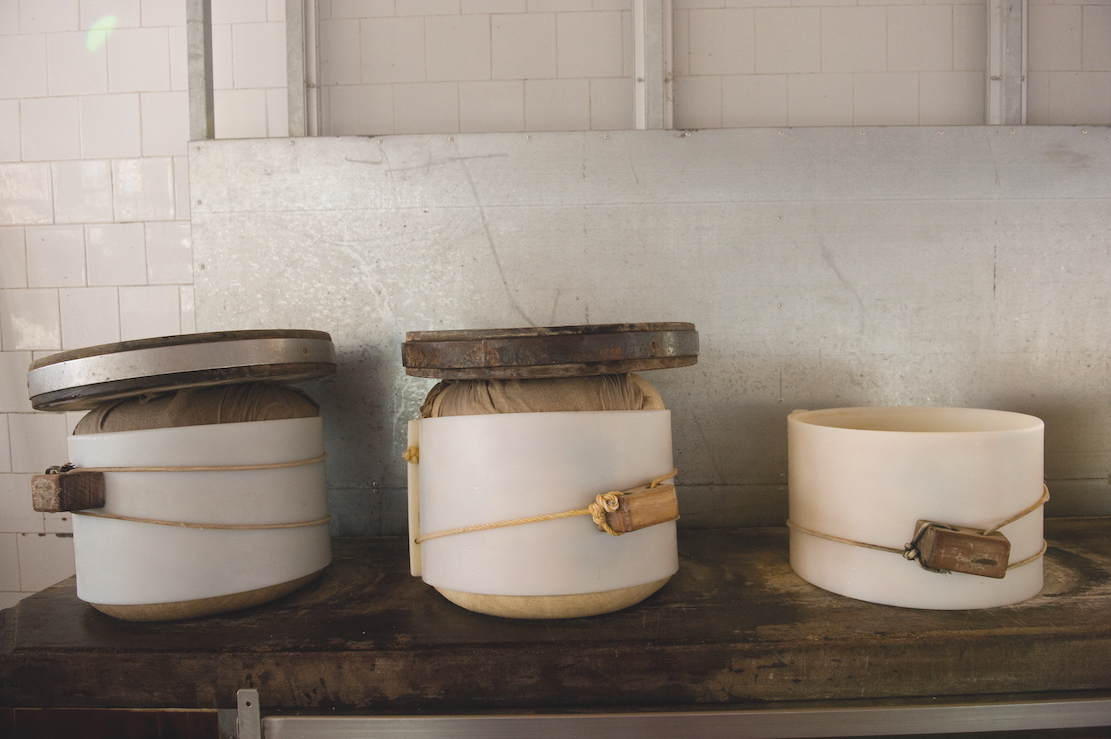
•
Production in 5 provinces
The
production area of Parmigiano Reggiano is more
localized. By contrast, Grana Padano can be
produced from farms located in 33 provinces
between Lombardy, Veneto, Piedmont, Emilia-Romagna
and Trentino Alto Adige (limited to the province
of Trento and some municipalities in the province
of Bolzano).
•
No additives
Parmigiano
Reggiano is made with no additives and its
production specifications also prohibit the use of
natural additives. However, Grana Padano allows
the use of lysozyme, a protein extracted from
hen’s egg white, to control unwanted fermentation.
•
Only hay and grass
To
make Parmigiano Reggiano, cows are exclusively fed
hay and grass (alfalfa and stable meadows),
without using silage or fermented forage. Grana
Padano allows the use of silage in the feed.
•
Minimum and average
maturation
The
minimum maturation period for Parmigiano Reggiano
is 12 months and, although the average maturation
period is 24 months, the cheese can be matured for
much longer—30 months and beyond. Grana Padano is
marked at 9 months and on average consumed at 15
months.
•
Only natural fermented
whey
Parmigiano
Reggiano dairies exclusively use natural fermented
whey as a bacterial starter to boost the
microbiological process. Grana
Padano allows the use of lactic bacteria isolated
in a laboratory from dairies’ natural fermented
whey, albeit this is limited to 12 times per year.
•
Quality inspection
Parmigiano
Reggiano boasts a 100% quality-control rate as the
selection carried out by the Consortium during
quality inspection (suitability assessment) at 12
months is performed on every single wheel. For
Grana Padano, such a selection only occurs at 9
months and only on some wheels.
•
Dairies and annual
production
In
2019, 3,754,192 wheels of Parmigiano Reggiano were
produced in 321 dairies, while 5,164,59 wheels of
Grana Padano were produced in 128 dairies. Last but
not least, the price of milk for Parmigiano
Reggiano cost on average 35-45% more than Grana
Padano. This data simply reflects the consumer's
willingness to pay a higher price as a summary of
the points of distinctiveness listed. If the
differences listed were not important to the
consumer, they would not be willing to pay such a
higher price for Parmigiano Reggiano.
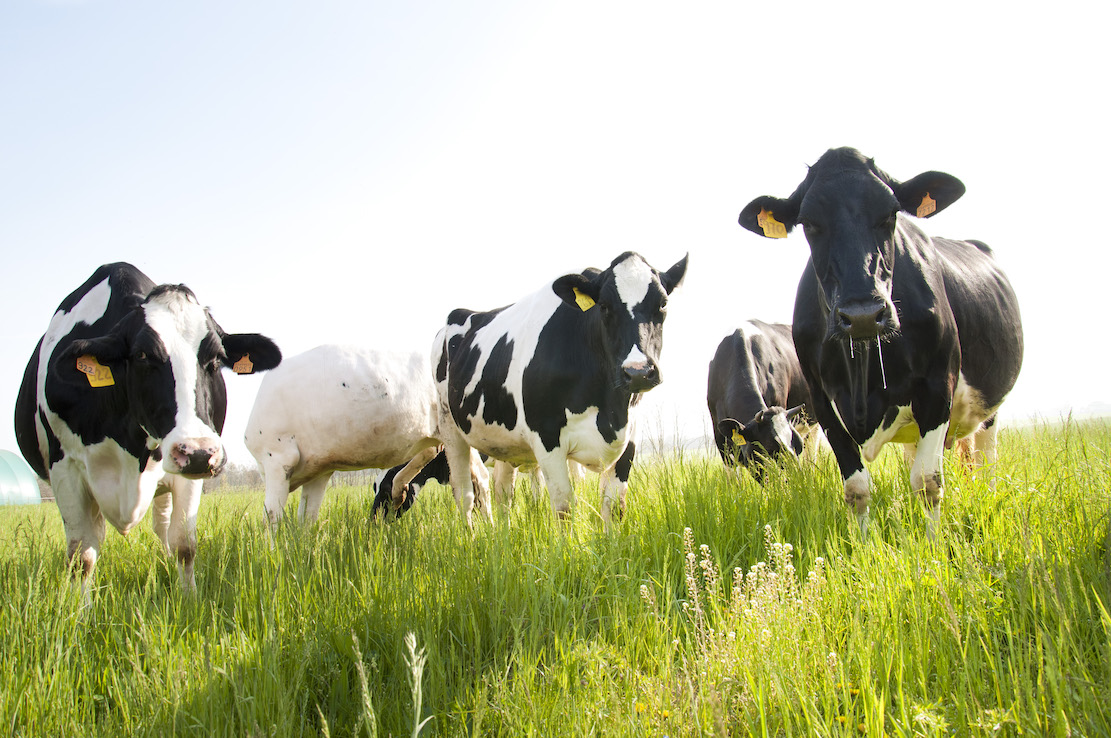 Has
Parmigiano Reggiano production increased a great
deal in the past decade? Is the supply
unlimited?
Has
Parmigiano Reggiano production increased a great
deal in the past decade? Is the supply
unlimited?
The cattle producing milk intended for the
production of Parmigiano Reggiano follow a
specific diet. The specifications set out that
forage should mostly be procured locally, with at
least 50% of the forage being grown by the dairy
farm, and at least 75% should be grown within the
production area. The area of origin has a surface
of approximately 3,861 square miles, and therefore
there is an intrinsic limit to the Parmigiano
Reggiano production but, given the surfaces, there
is still an area of significant potential growth.
What makes one
wheel Parmigiano Reggiano better than another?
Every wheel of Parmigiano Reggiano is quality
tested at an age of about 12 months. Any wheels
that don’t meet the quality requirements of the
Consortium descend into total anonymity: after the
hammer test (below), they are "bleached,"
that is, the characteristic dots impressed on the
rind are mechanically removed. There is no such
thing as “second-rate” Parmigiano Reggiano. Either
the cheese is worthy of the name, or it simply
cannot be called Parmigiano Reggiano.
But, of course, every wheel is different
from another. If
it is a “young” Parmigiano Reggiano of 12
months, it will be delicate, with hints of milk,
yogurt and fresh fruit (perfect for enriching
salads and it combines perfectly with a sparkling
white wine); a 36-month-old cheese, on the other
hand, has a stronger flavor, with notes of spices,
nuts and meat stock, and is the ideal ingredient
in stuffed pastas, or to be enjoyed at the end of
a meal with fruit and honey, paired with a complex
wine, a good Marsala or even a Trentino Grappa.
And it’s not just a question of maturation stages,
but of cow breeds as well. There is the Modena
White Cow, the Reggiana Red Cow, the Brown Cow and
the Italian Friesian. Just as there are
“certified” products that meet all kinds of needs:
from Mountain product to Kosher, Halal and
Organic.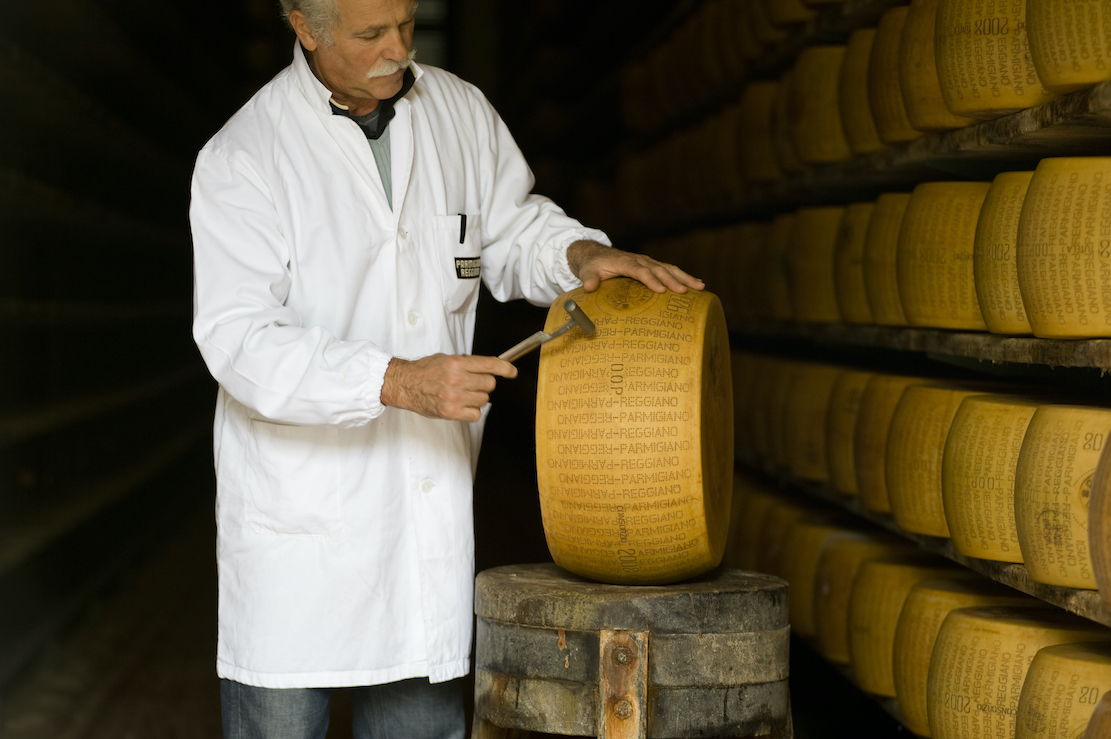
How
important is the length of aging? How much is
probably too long?
The minimum maturation period is 12 months,
but Parmigiano Reggiano reaches a degree of
maturation that fully expresses its typical
characteristics at approximately 24 months. It can
mature up to 40, 50 months or longer, acquiring
unexpected and unparalleled flavors and aromas. In
maturation, thanks to the action of the enzymes
released by lactic bacteria, proteins are broken
down into smaller pieces, free peptides and amino
acids, the basic bricks of the protein chain. This
action of protein breakdown (proteolysis)
determines the structure and sensory properties of
Parmigiano Reggiano and its high digestibility.
The different degrees of maturation give rise to
varying aromatic sensations and make it
particularly versatile in the kitchen and suitable
for several preparations and pairings.
When tasting a sliver of Parmigiano
Reggiano, one cannot ignore that the complexity of
its aromas and tastes are not only due to the cow
feed and processing of the milk, but also to the
long maturation period. The proteolysis and
lipolysis processes that occur inside each wheel
of cheese reflect the changing temperature and
humidity levels of the seasons, enabling the
cheese to develop an increasingly pronounced,
complete, and complex character over time.
Consequently, the sensory characteristics of
Parmigiano Reggiano are constantly evolving, which
is why different ages of the cheese stimulate the
taster’s senses differently.
Is
it true that Parmigiano Reggiano should be cut
with a spade-like utensil, not a knife blade?
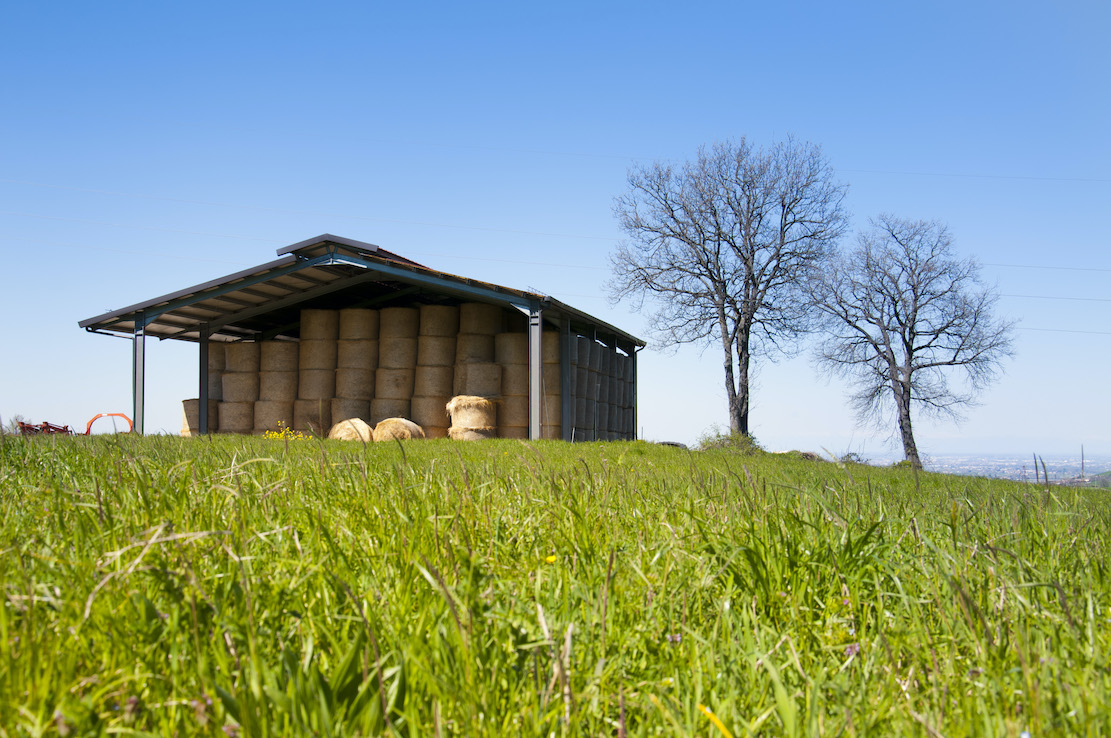 Yes,
when
the cheese is served during a social situation, it
is best chunked with the classic almond-shaped
knife, which will enhance the characteristic
graininess of Parmigiano Reggiano.
Yes,
when
the cheese is served during a social situation, it
is best chunked with the classic almond-shaped
knife, which will enhance the characteristic
graininess of Parmigiano Reggiano.
How
has climate change affected the region?
Parmigiano Reggiano is the product of an
extraordinary and exclusive link with the
environment. Under a centuries-old agreement, the
Parmigiano Reggiano farmers and master
cheese-makers restore the rightful care and
passion to this land, becoming the source of life,
work, loyalty and the memory of a great tradition.
The name itself, Parmigiano Reggiano, sums up the
exclusive link with the land that gives rise to
this product.
For all these reasons, climate change is of
great concern to us. Water scarcity and global
warming are advancing, putting our supply chain of
310 dairies and over 50,000 workers at risk. If
something were to alter the balance of our
ecosystem, if the good bacteria that have lived
here for thousands of years were to disappear,
that link with the territory that makes Parmigiano
Reggiano a product with Geographical Indication
would be missing.
More than a matter of price, it is a
question of taste. Each cheese has its own
personality and their use is quite codified in the
Italian regional cuisine. The first time many of
us tasted Parmigiano Reggiano it was grated. And
it's incredibly good, right?
That said, the key to the success of
Parmigiano Reggiano is its versatility. Parmigiano
Reggiano is used in the kitchen not just for the
traditional “sprinkling” over first courses, but
also to give a touch of character to meat, fish
and even desserts. This is the reason why
Parmigiano Reggiano is found in every country in
the world, with an export share that grows every
year and has already exceeded the goal of 44%. You
can be daring with Parmigiano Reggiano!
I believe it is a combination of various
factors. On the one hand, consumers have evolved
and today they know how to appreciate the product
more. On the other hand, there are more cheeses to
offer with the different maturations and
biodiversity, increasing the chances of finding a
Parmigiano Reggiano suitable for everyone’s taste.
In addition, the Consortium has educated
store managers on product conservation. I take
this opportunity to remind you that Parmigiano
Reggiano should be kept in the refrigerator and
removed some time before tasting so that it
reaches a temperature of 61°F.
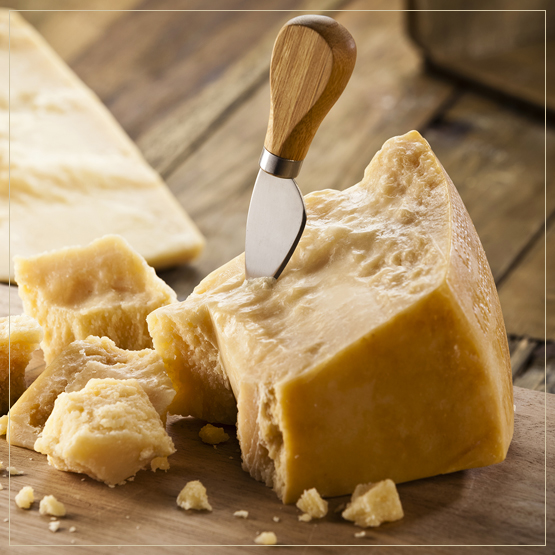 What
percentage of Parmigiano Reggiano is now
exported and how much to the US?
What
percentage of Parmigiano Reggiano is now
exported and how much to the US?
The Parmigiano Reggiano market is becoming
ever more international. The export share is 44%
(+10.7% of volume growth vs. previous year). The
United States is the first market (20% of overall
export, roughly 12,000 tons), followed by France
(19%), Germany (18%), the United Kingdom (13%) and
Canada (5%).
Are
there any recipes for cooking with Parmigiano
Reggiano?
There are plenty of recipes for cooking
with Parmigiano Reggiano on parmigianoreggiano.us.
Since spring is coming, I recommend an easy one
for an outdoor aperitif with friends.
What do you see happening in the next five
years?
Looking ahead to the future, supply chain
and product protection are the focus for the
coming years. Animal welfare and product
typicality have always been an essential pillar of
the Consortium’s strategy. In the 2021 budget, the
Board of Directors has foreseen a first three-year
2021/23 investment of approximately 10 million
euros to promote virtuous behavior of the farms in
the supply chain aimed at improving animal welfare
standards in the individual supply chains of the
dairy farms.
The Consortium estimates that the turnover
of fake parmesan outside the European Union (from
Brazilian parmesao
to Argentine reggianito, spread
across all continents) is 2 billion euros, about
200,000 tons of product, or 15 times the volume of
Parmigiano Reggiano exported. Even to this day,
too many consumers outside the EU still buy
generic cheeses believing they are buying the
original PDO product. The Consortium will always
be at the forefront in the fight against Italian
sounding products.
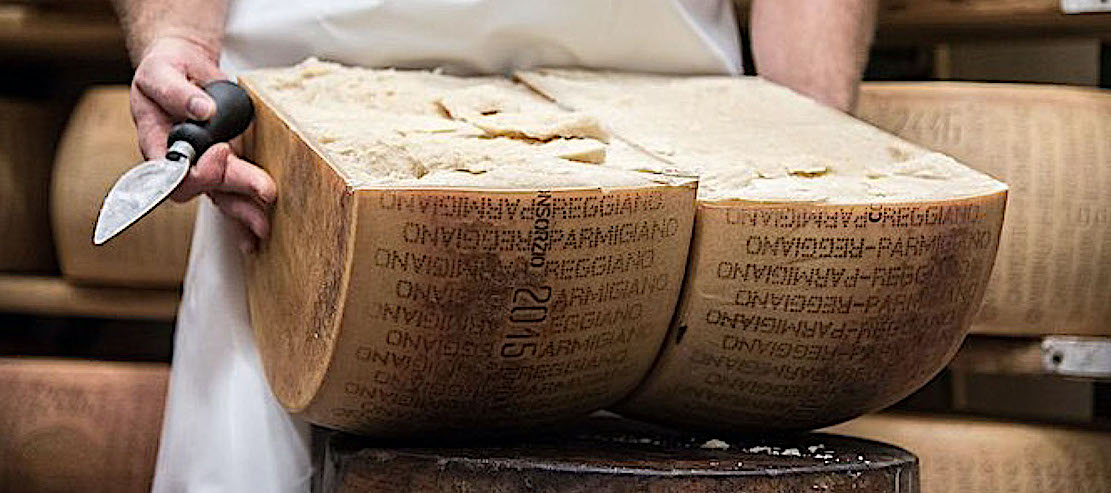 I believe that there is a real vocation for
the production of Parmigiano Reggiano in our
lands. We are aware that the reason why our
product has become, over the centuries, an
authentic expression of Made in Italy agribusiness
is because we have always been faithful to our
principles. Parmigiano Reggiano indeed is
essentially produced about nine centuries ago:
using the same ingredients (milk, salt and
rennet), with the same craftsmanship and
production technique that has undergone very few
changes over the centuries, thanks to the decision
to keep a fully natural production.
I believe that there is a real vocation for
the production of Parmigiano Reggiano in our
lands. We are aware that the reason why our
product has become, over the centuries, an
authentic expression of Made in Italy agribusiness
is because we have always been faithful to our
principles. Parmigiano Reggiano indeed is
essentially produced about nine centuries ago:
using the same ingredients (milk, salt and
rennet), with the same craftsmanship and
production technique that has undergone very few
changes over the centuries, thanks to the decision
to keep a fully natural production.
The quality of Parmigiano Reggiano is
guaranteed by the Consortium, the protection body
that includes all Parmigiano Reggiano producers,
who process the milk from the farmers of the area
of origin into this PDO cheese complying with the
specifications. It was established in 1934 to
protect, defend, and promote Parmigiano Reggiano,
safeguarding its uniqueness and spreading
awareness of the cheese worldwide.
The different degrees of maturation give
rise to varying aromatic sensations and make it
particularly versatile in the kitchen and suitable
for several preparations and pairings. “Fresh”
Parmigiano of 12-18 months can be accompanied by a
dry white wine with good acidity, such as
Vernaccia di San Gimignano or a bottle-fermented
sparkling wine, such as Franciacorta, Trento
Classico or Champagne. At 24 months of age,
Parmigiano Reggiano can be combined with red wines
of varying structure such as Sangiovese di
Romagna, Gutturnio or Chianti Classico. A 36
months goes extremely well with red wines of body
and structure (for example Barolo, Barbaresco or
Brunello di Montalcino) and with white raisin
wines (such as Albana di Romagna) or meditation
wines.
What
are
the nutritional benefits?
Made with only milk, salt, and rennet,
Parmigiano Reggiano is naturally lactose free with
no additives or preservatives and it’s also a
source of phosphorous and rich in calcium. This
makes it ideal for everyone, from children to the
elderly. The milk used to make this world-renowned
cheese also never undergoes heat treatment,
therefore it features all the richness of lactic
ferments naturally present in it.
SALINAS TEN YEARS LATER
By John Mariani

 The two men parted at
some point, with Blanco opening an Ibiza in
Chappaqua (which I reviewed in April) and Bollo
setting up shop at Salinas, which also made my Esquire
list. Since then I have always regarded Salinas as
among the restaurants I most look forward to
returning to, not only because I know the food
will be consistently good, but because Bollo is
constantly inventing new, tantalizing dishes to
try. The menu has always leaned towards the tapas
style of Spain, particularly that of San
Sebastián, but goes much further than most in
using the best seasonal ingredients from all over.
Early on, at Meigas, he incorporated some of
Ferran Adria’s modernist ideas about Spanish food
but abandoned all of the excrescences of that
promotional style. Now his food is more rustic,
but wonderfully conceived and beautifully
presented.
The two men parted at
some point, with Blanco opening an Ibiza in
Chappaqua (which I reviewed in April) and Bollo
setting up shop at Salinas, which also made my Esquire
list. Since then I have always regarded Salinas as
among the restaurants I most look forward to
returning to, not only because I know the food
will be consistently good, but because Bollo is
constantly inventing new, tantalizing dishes to
try. The menu has always leaned towards the tapas
style of Spain, particularly that of San
Sebastián, but goes much further than most in
using the best seasonal ingredients from all over.
Early on, at Meigas, he incorporated some of
Ferran Adria’s modernist ideas about Spanish food
but abandoned all of the excrescences of that
promotional style. Now his food is more rustic,
but wonderfully conceived and beautifully
presented.
Salinas
is composed of a long bar and lounge with a gaily
lighted rear dining room with brick walls and an
enclosed patio beyond. At the moment, just as New
York is at 75% occupancy, a lone, fast-on-his-feet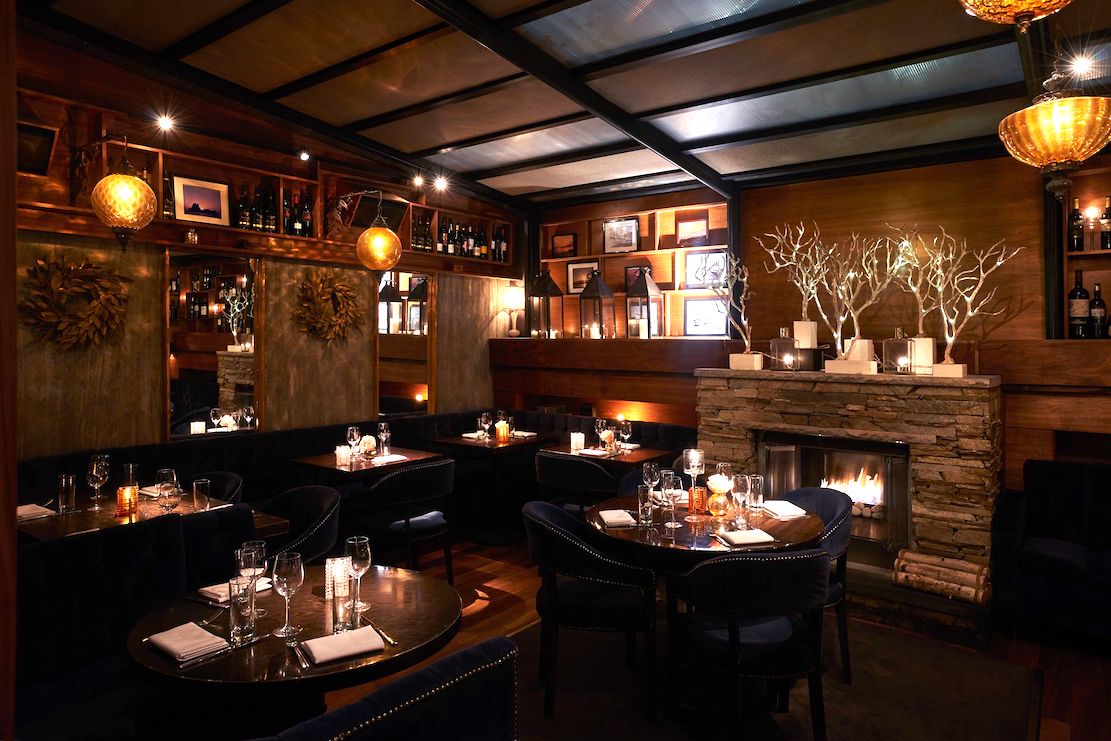 waiter is taking care of all the tables with
remarkable agility and cordiality.
waiter is taking care of all the tables with
remarkable agility and cordiality.
As I always do at Salinas, I put myself in
Bollo’s hands and asked him to make me some old
and some new dishes. Actually, that’s the best way
to go because at the moment the printed menu does
not begin to hint at the nightly specials of new
dishes you’ll want to try. We began with crispy
Kennebec potatoes bravas
with shaved Iberico ham and a spicy beef tartare.
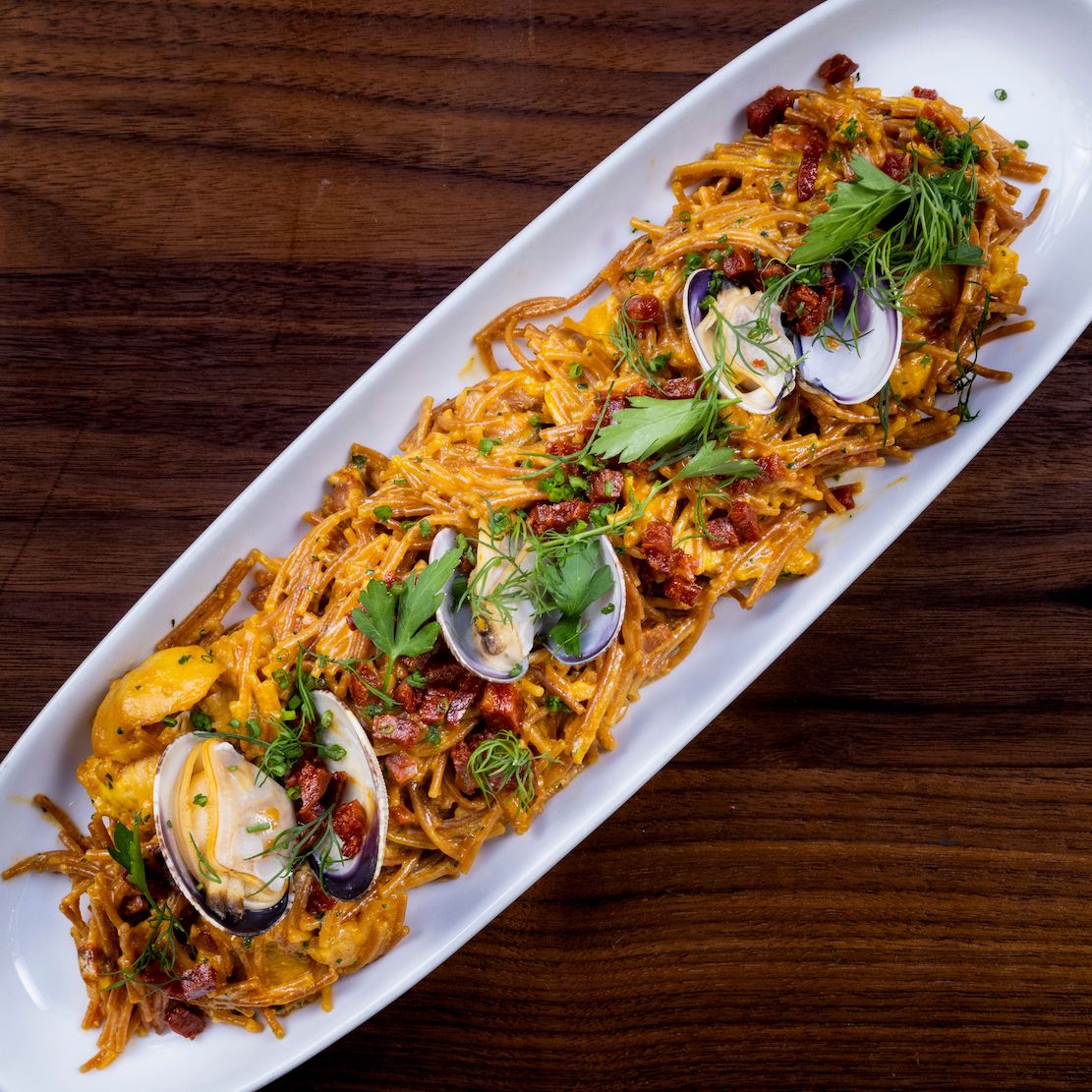 Every tapas bar in Spain
serves croquettes, which Bollo stuffs with short
ribs and hard-boiled egg, set with striped bass
sashimi and yuzu marmalade—not the kind of item
you’d easily find at a counter in San Sebastian.
Every tapas bar in Spain
serves croquettes, which Bollo stuffs with short
ribs and hard-boiled egg, set with striped bass
sashimi and yuzu marmalade—not the kind of item
you’d easily find at a counter in San Sebastian.
Variously colored cauliflower was
flash-fried and dashed with creamy yogurt, tangy
citrus zest and shavings of bottarga roe. Alcachofas
crujientes are crispy artichoke hearts,
beets, capers and Spanish goat cheese with
preserved lemon aïoli. One of the dishes that has
become a long-time favorite at Salinas for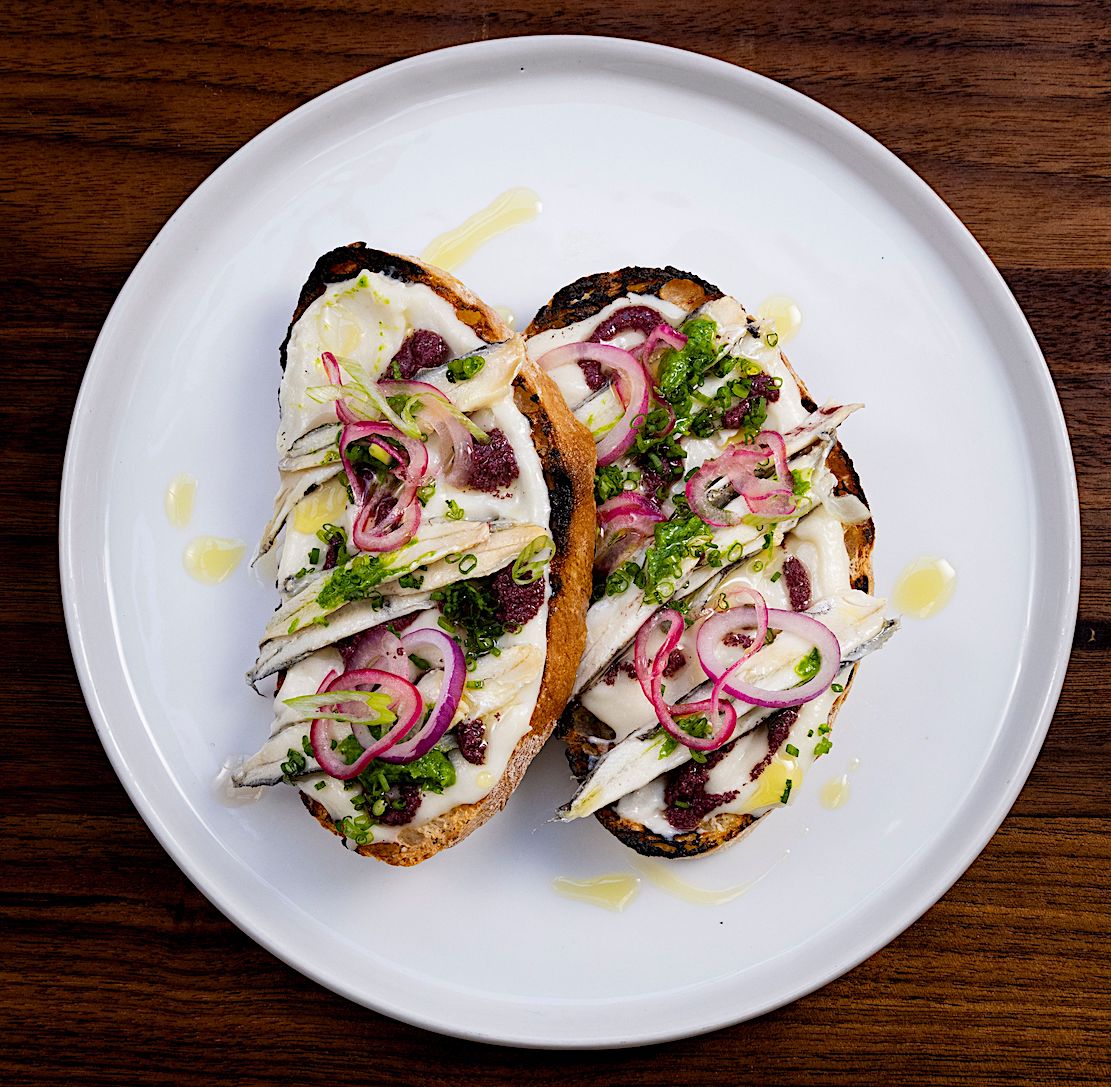 good reason is Bollo’s popcorn-crusted Galician
octopus in a dark squid ink aïoli, enriched with a
preserved lemon emulsion.
good reason is Bollo’s popcorn-crusted Galician
octopus in a dark squid ink aïoli, enriched with a
preserved lemon emulsion.
The European bass called lubina
was pan-seared to perfect succulence and came with
a springtime bounty of peas, la
Granja beans, hojiblanca
olive oil and mint broth. I adore the Carabineros
ruby red Spanish prawns for their sweetness, here
served with pistachio picada
gratinate.
One of the pleasures of Iberian cookery is
called fideo,
a kind of angel’s hair pasta, here toasted and
served with spicy chorizo sausage, clams, chicken,
fava beans and a lustrous saffron aïoli.
The problem with tapas is that it’s hard to
stop ordering more, but don’t neglect dessert at
Salinas, like the Vasco cheesecake or the Basque
“burnt cheesecake” or the brioche bread pudding
with passion fruit, double cream and orange
marmalade.
I was surprised to find that Salinas’s wine
list, while composed of many fine examples of
modern Spanish viniculture, is nearly bereft of
any bottles under $100. But they make a delicious
sangria by the half or full liter, and of course
Spanish beer and cider go well with this food.
Salinas’s boast is that
it is “authentic Spanish cuisine,” and while that
is very true and the flavors of Spain are in every
dish, Bollo is making a very personalized style of
Iberian flavors. It is very exciting and very
satisfying.
Tapas prices
range from $9 to $16, rice dishes $24-$29 and
large plates $25-$30.
❖❖❖
CAPONE’S
GOLD
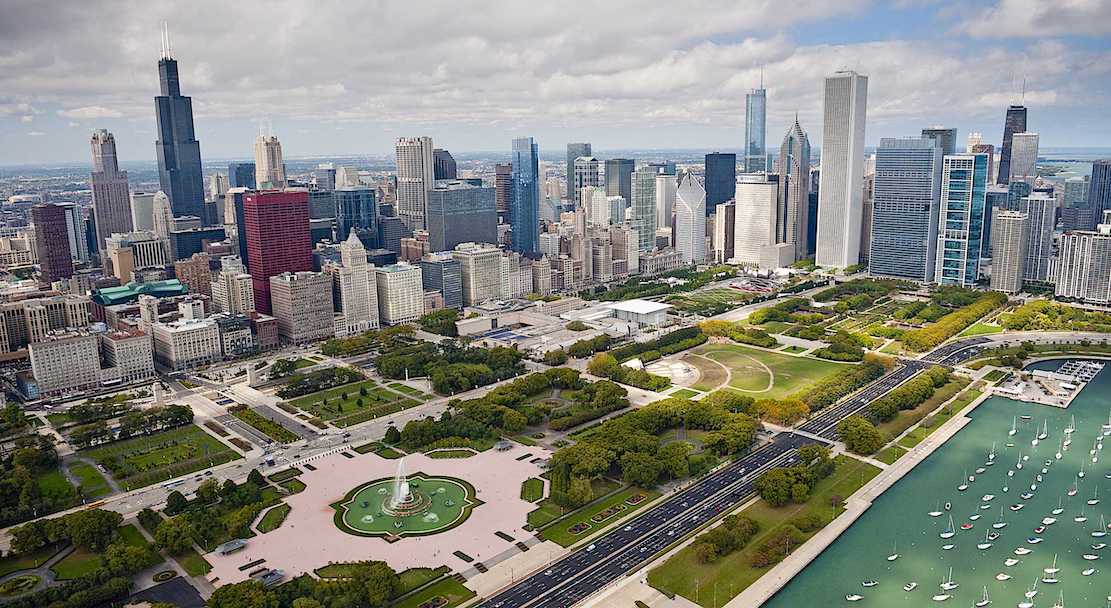
Katie Cavuto had never been to
Chicago and found it one of the most beautiful
American cities she’d ever seen—its majestic
skyline on the lake, the broad avenues, the
generous lack of density that allows light to
bathe the buildings and streets. She
hoped she would have time to take in some of
the city’s sites and museums but she was on a
tight schedule and didn’t want to put too much
on her expense account. She got a good deal on
a room at the Drake Hotel.
 She thought it somehow ironic that by
flying into Midway rather than O’Hare airport,
her taxi took her right through Cicero, Capone’s
former headquarters, so she asked the driver to
take her by 7244 South Prairie Avenue (left),
Capone’s home on the South Side until he went to
prison. Frank
Capone’s funeral was held there, and Al’s mother
lived at the house till she died in 1952.
She thought it somehow ironic that by
flying into Midway rather than O’Hare airport,
her taxi took her right through Cicero, Capone’s
former headquarters, so she asked the driver to
take her by 7244 South Prairie Avenue (left),
Capone’s home on the South Side until he went to
prison. Frank
Capone’s funeral was held there, and Al’s mother
lived at the house till she died in 1952.
Katie hadn’t the temerity to go up and
knock on the door—she wished David was with
her—but she got out and looked around from the
street. It
was a pleasant, well-tended neighborhood, with
mostly red brick houses, as was Capone’s
two-story structure. It
struck Katie that it was awfully modest for
someone who had once been one of the richest men
in America.
She noticed bars on the basement windows,
and in the back was a long garage, long enough
for Capone to store his armored limousine. Katie
made some notes, got back in the taxi feeling
elated, and told the driver to continue on to
the hotel.
It was past
one o’clock when she arrived at the hotel and
she asked the registrar, 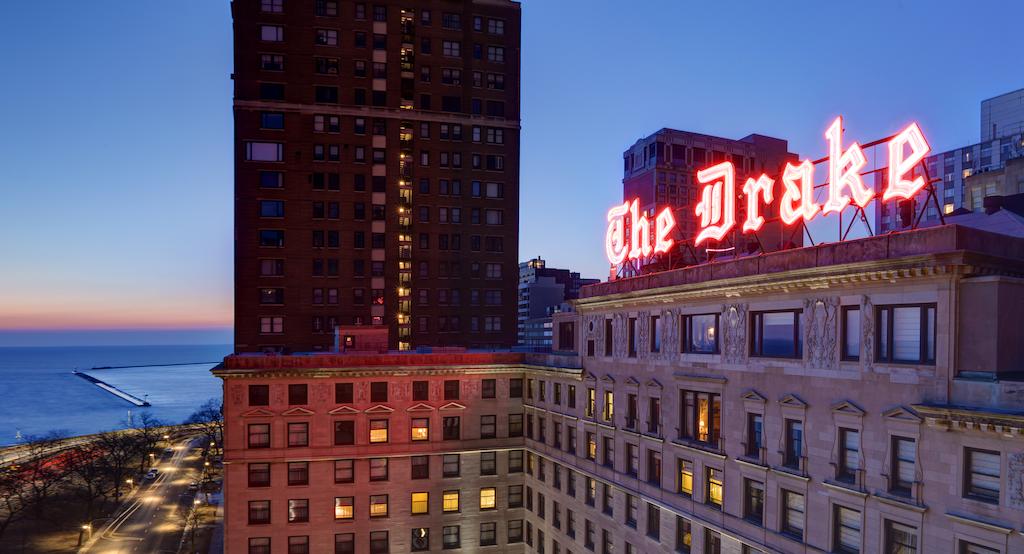 “Where can I
get something to eat?”
“Where can I
get something to eat?”
“I think you’ll enjoy our Cape Cod Room,”
he said. “It’s quite historic, goes back to the
1930s. Excellent seafood.”
“Sounds perfect. Can
you have my bags taken to my room, please?”
Katie
went to the Cape Cod Room (below),
intrigued that Al Capone and his cronies might
have eaten there. The maître d’ welcomed her and
asked if she’d ever eaten at the restaurant.
“No,” said Katie, “but I am interested in
its history. When did it open?”
“Nineteen thirty-three,” said the maître
d’. “We have a `Wall of Whiskies and Wine
Bottles saved from Prohibition.
“But Prohibition was over by then, wasn’t
it?”
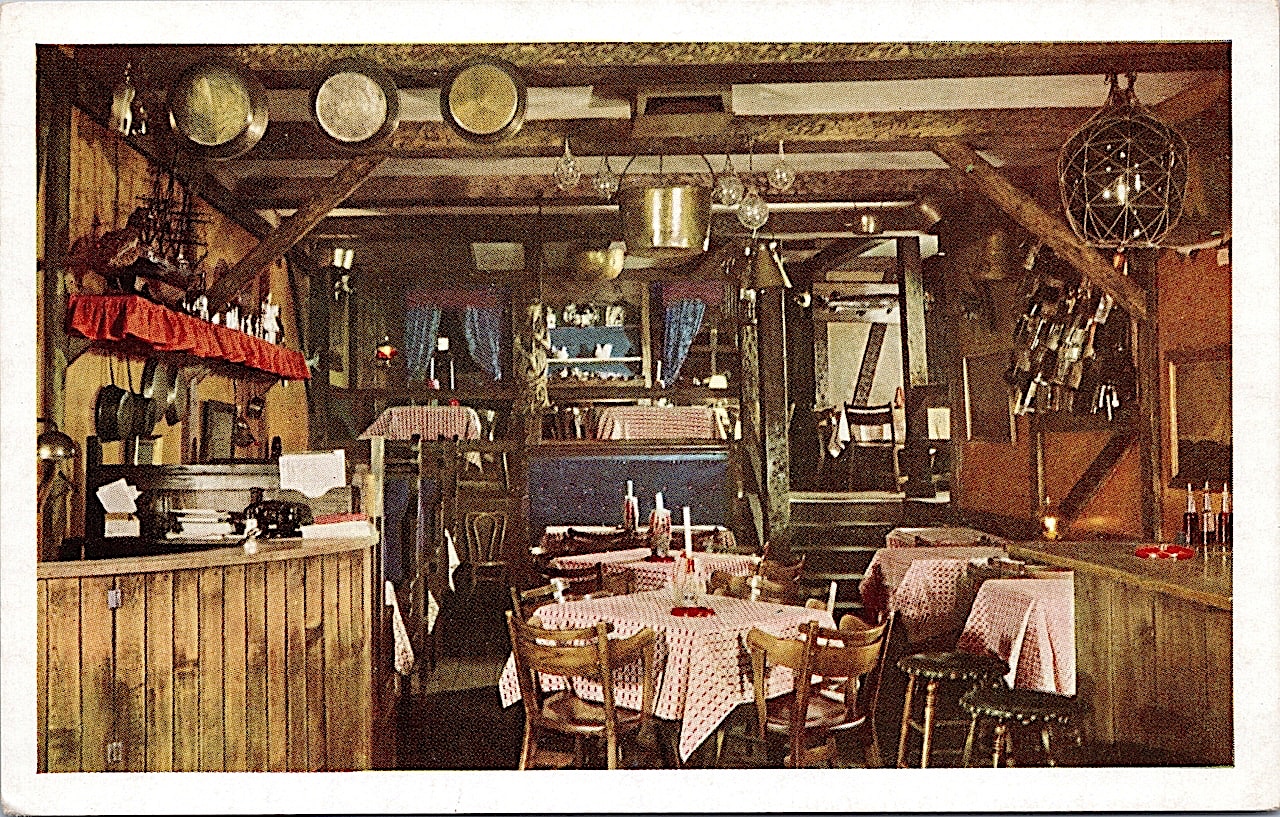 “I think it was just
repealed that year,” said the maître d’, who was
too young to have any real familiarity with the
history. “But the hotel and restaurant were
designed before 1933, when Prohibition was still
in force. They
probably had a stock of whiskies and wine before
they opened.”
“I think it was just
repealed that year,” said the maître d’, who was
too young to have any real familiarity with the
history. “But the hotel and restaurant were
designed before 1933, when Prohibition was still
in force. They
probably had a stock of whiskies and wine before
they opened.”
“That’s possible,” admitted Katie, whose
hopes that Capone might have dined there were
dashed, because he’d already gone to prison two
years earlier. But she already felt enticed,
almost giddy, by all the history of Capone’s
time all around her. It suddenly occurred to her
that there must be dozens of places still extant
from Capone’s days and that she should really
try to visit all of them for clues. But first
she’d start the way she always did on a story:
hit the archives early the next morning.
Meanwhile, she ordered a cup of clam
chowder and the fish of the day, along with a
glass of white wine, with which, silently, she
toasted David Greco.
*
*
*
While Katie
was having her lunch, David was on the phone
with his old colleagues and sources in order to
get back in touch with mob history in New York
and, by extension, Chicago. How did Capone’s
story overlap with those of the New York gangs?
Did anyone ever speak about Capone’s gold heist,
which would have been legendary among competing
gangsters. No one had ever pulled off such a
crime in American history. Someone must have
known something.
The phone rang at Mike Cesario’s precinct
office.
“Detective Cesario.”
"Mike, it’s David Greco.”
“Hey, where you been? Getting fat on your
farm up the Hudson?”
“More or less. You good?”
“Two more years to go, then I join you up
there, if I live that long. What’s up?”
“Well, I
know this sounds crazy,” said David, “but I’m
helping this reporter (he almost said
“journalist”) with a story she’s doing on Al
Capone’s missing stash of government gold.”
“Jeez,” said Cesario, “I haven’t thought
about that in years. You hear something new?”
“Not yet, but this reporter’s got an
interesting angle on why Capone never recovered
the gold while he was alive, and I know you’d
done a lot of investigation back in the ‘80s on
some of the wise guys who came out of Capone’s
gang after he croaked.”
“Yeah, most of them got absorbed into the
Genovese gang. I think they’re all dead by now,
one way or the other.”
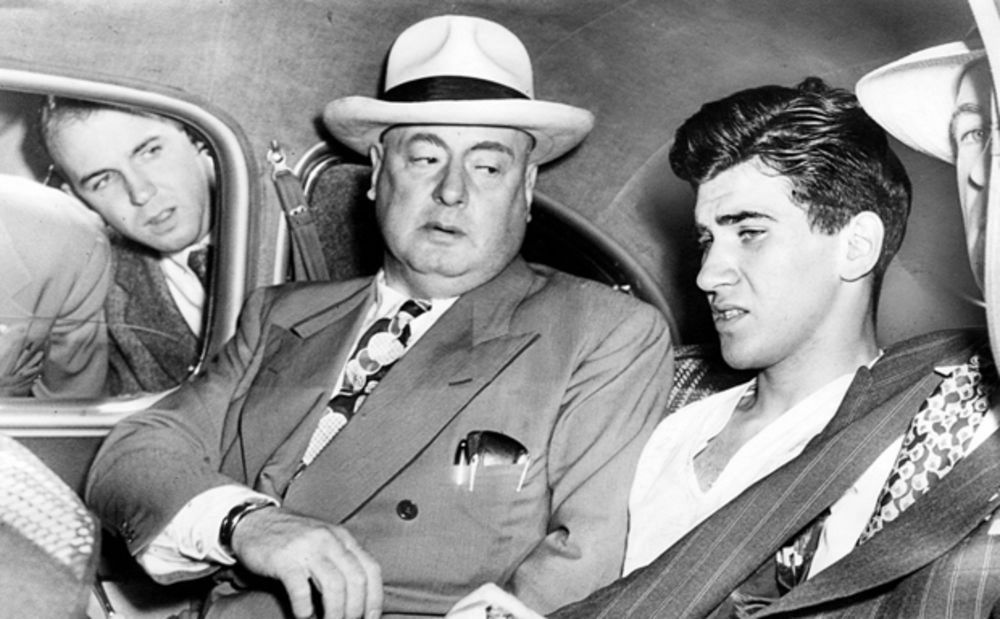 “Well,
wasn’t there one guy with a name like ‘Coco’ who
turned on the Genoveses and you got him into
Witness Protection?”
“Well,
wasn’t there one guy with a name like ‘Coco’ who
turned on the Genoveses and you got him into
Witness Protection?”
“Larry Cuoco,” said Cesario. “Nicknamed
‘Pants’ because he always hiked them up on his
stomach because he was so skinny. Couldn’t hold
a gun in the belt otherwise.”
“Right. So he’s still around?”
“Far as I know.”
“Can you find out? I’d like to speak to
him.”
“Hey, Dave, you know that info is federal
and confidential.”
“Yeah, I knew that when I put some guys
into the Program, but I also knew where they
relocated them.”
“And you want me to tell you what I may
know about his whereabouts?”
“Mike, c’mon. It’s me. I want to talk to
the guy, not get him in trouble.”
There was a long pause on the end of the
line, then Detective Cesario said, “I’m not
promising you anything, but I’ll think about it. Don’t
expect me to call you back.”
“Understood. Hey, best to Nancy.” But
Cesario had already hung up.
Two days
later a FedEx package arrived at David Greco’s
home. He
wasn’t expecting anything but had a suspicion as
to where it came from. He opened the box and
covering tissue paper to find a small terracotta
bowl with American Indian markings. Inside was
an index card reading, “Happy birthday from
Slacks Kline.” David turned it over and found
the bowl was signed, apparently by an Indian
craftsman, and the word “PIMA.”
David smiled and said to himself,
“Thanks, Mike.” He knew immediately the gift had
come from Mike Cesario and what it meant:
“Slacks” meant “Pants,” “Kline” was the new name
the feds gave Cuoco, and Pima meant Pima County,
Arizona, where the feds often sent people in the
Witness Protection Program.
He
also recalled, probably unrelated, that crime
boss Joe “Bananas” Bonanno had lived in Tucson
for a good portion of his life.
David’s next call was to a friend at the
F.B.I.
“Frank?
David Greco.”
“Well, well, well,” said agent Frank
English, “you still rooting out evil in Gotham
City?”
“Nope. Retired two years ago. Man of
leisure now.
But I keep my ears open for interesting
news.”
“Meaning you need help on a case you’re
not even on?”
“Yeah, I’m just diddling around wondering
whatever happened to Al Capone’s gold stash.”
“Ha!” said English. “That’s been a dead
end for years around here. Nothing’s turned up
in decades. Why? You have something we should
know?”
“Frankly, I have zero. But I would like
to talk to a guy who had been in Witness
Protection, one of the old wise guys, name of
Larry ‘Pants’ Cuoco.”
“Oh, Jesus, what a moron that guy was,”
said English. “We never knew if he was telling
us anything worth knowing because he spit
everything out like a teenager caught robbing
the collection box. Only with a helluva lot of
corroboration could we use his shit in court.”
“But he had known Capone, right? Before
he came to New York.”
“Yeah,
I think so.
He was pretty old when we nailed him,
what, fifteen years ago now? He’s
probably in his eighties.”
“I assume anyone who knew Capone has to
be.”
“So what are you asking?”
“I’m smart enough to know that you’re not
going to tell me exactly where he is now,” said
David, “but if I tell you where I think he is,
will you confirm it?”
There was a bit of a pause, then English
said, “How about if I don’t say anything at
all?”
“Then I’ll make an assumption. So, is
Larry Cuoco now named `Kline’ and does he live
in or around Tucson?”
There was a very definite silence on the
end of the line.
“Thanks, Frank.”
“For what? I didn’t say a word.”
David hung up the phone and picked it
right up again.
“Southwest Airlines? Yeah,
I’d like to book a plane to Tucson, Arizona,
tomorrow, early as possible.”
He was then
tempted to call Katie but realized that not even
she should know about Cuoco’s whereabouts. It
would compromise both his friends English and
Cesario. If
he ever hinted at it to her, she could call
“Pants” Cuoco a “reliable source” in her
article.
❖❖❖
BREAK
OUT THESE WINES AND SPIRITS WHEN
YOU PULL OUT THE GRILL
By John Mariani
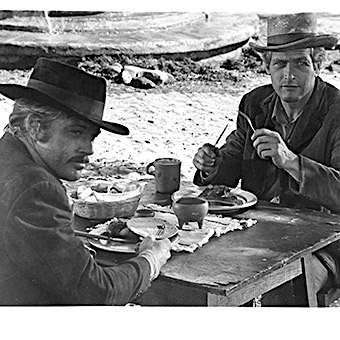
With warmer
weather in the offing, cold weather parts of the
country will start sprouting outdoor grills.
Here are some wines, and one Mezcal, that will
go very well with what’s on the charcoals.
Brancott
Estate Marlborough Sauvignon Blanc 2020 ($12)—Too many New Zealand Sauvignon
Blancs taste like fruit punch, but this is more
restrained by what Brancott calls “gentle bag
pressing to achieve fresh, elegant juice.” Elegant
or not, this is a fine cool climate white wine in
a year whose weather prevented any disease from
developing in the vineyards. With 13% alcohol you
can drink it with pretty much anything but red
meat all summer long.
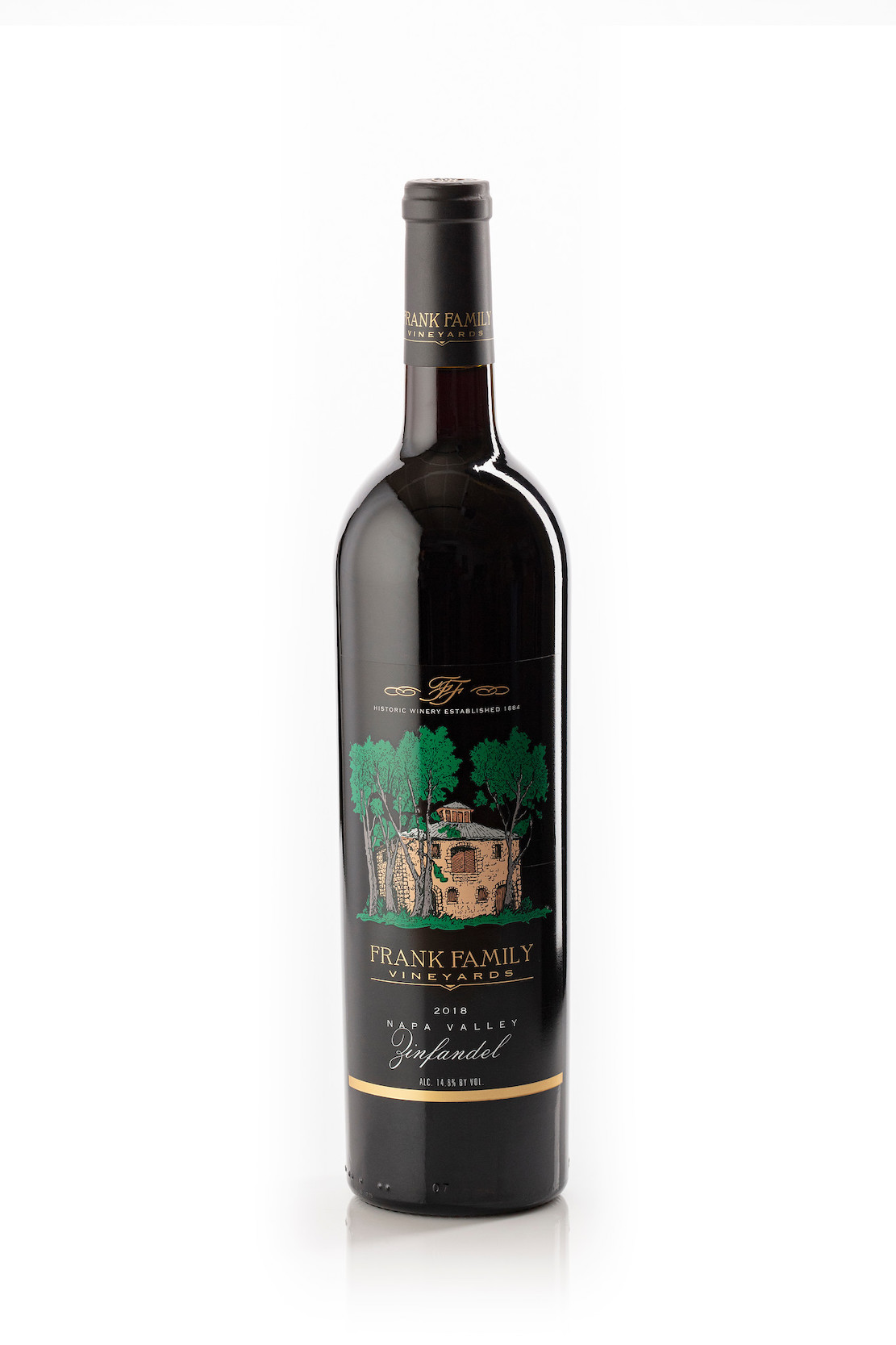 Justin Sauvignon
Blanc Central Coast 2020
($16)—An excellent price for an excellent
California Sauvignon Blanc that does not express
too much grassiness and instead has a rounded and
very full flavor.
At 13.5% alcohol it is congenial to drink
but is distinguished by its varietal flavor. I can’t
think of anything better than this wine with
goat’s cheese in any form, including gently set on
the grill to get creamy or with a salad that does
not have too much vinegar.
Justin Sauvignon
Blanc Central Coast 2020
($16)—An excellent price for an excellent
California Sauvignon Blanc that does not express
too much grassiness and instead has a rounded and
very full flavor.
At 13.5% alcohol it is congenial to drink
but is distinguished by its varietal flavor. I can’t
think of anything better than this wine with
goat’s cheese in any form, including gently set on
the grill to get creamy or with a salad that does
not have too much vinegar.
Frank
Family Vineyards Zinfandel
2018 (
$38)
—Winemaker Todd Graff
added a touch of Petite Sirah to the big-bodied
Zinfandel and aged the wine for 16 months in 33%
new and 67% used French oak barrels. The grapes
are from Capell Valley east of the Vaca
Mountains, Titus Vineyards in St. Helena and
Nissen Vineyard in Calistoga, where old-vine
Zinfandel dates back to 1950s. This is a
ravishing zin, lots of fruit and ballast in the
finish. The alcohol is high but you expect that,
so savor this was a charcoal-seared sirloin.
Siduri
Chardonnay 2019
($25)—Another refined example of Willamette Valley
terroir, showing that a cool climate is kind to
grapes like Chardonnay that can be so easily
manipulated. It spent 10 months in 25% new French
oak, which gives it just enough of a sweet
undertone and maintains a good balance of acid.
This is the ideal white wine for grilled salmon
and almost every shellfish.
Laetitia
Estate Chardonnay 2019
($22)—Very high-quality at a modest price for this
first-rate Chardonnay from the Arroyo Grande
Valley. It has youth on its side and will show
well this summer with appetizers like clams, crab
and oysters. The vineyards are only 3 miles from
the Pacific ocean and that cooling wind has a very
positive effect on the grapes.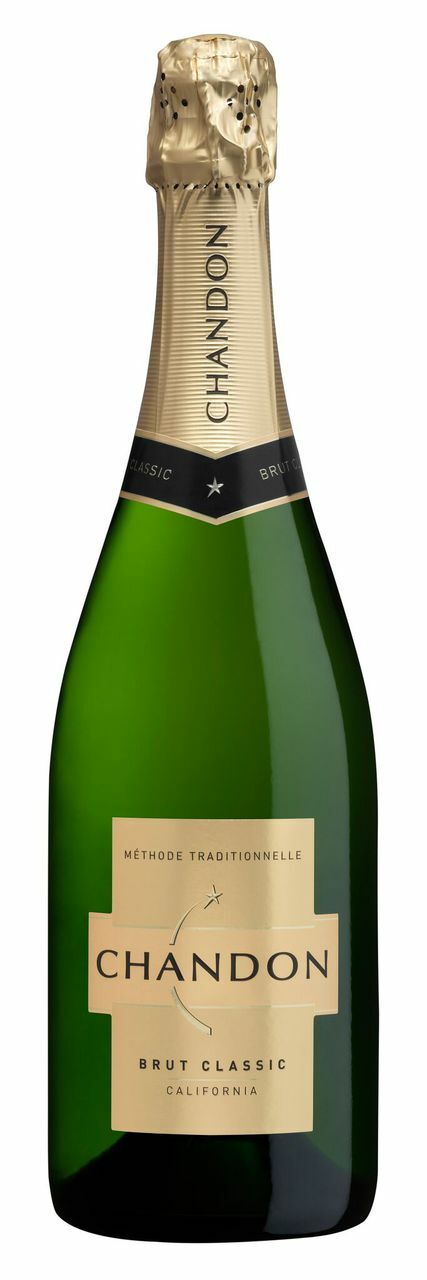
Chandon
Brut ($24.50)—Chandon
calls this their “go to” California sparkling
wine, which seems a bit modest except that you
really could drink this on a regular basis
throughout the summer as a fine apéritif. It has
just the right balance of fruit, sugar, acid and
bubbles to carry you through an entire meal and
serve it with cheeses also.
Il
Conte Villa Prandone Lu Kont Rosso 2016 ($35)—The wines of the Marche region in
Eastern Italy are neither well-known nor much
exported because they didn’t used to have that
much to offer outside of the region itself. This
is changing and Il Conte Villa Prandone is showing
that they can compete with the better wines of
Abruzzo, Puglia and southern Italy. It’s a little
expensive but it’s a very fine red and it’s
delicious with grilled chicken or pork.
Domaine
Faiveley Mercurey Clos Rochette 2018 ($35)—Faiveley has achieved a fine balance
between maintaining tradition and being in the
forefront of French regional winemaking. Clos
Rochette is an 11-acre monopole of the domain with
very rocky, clay-rich soil with some lime stone
and gravel. The vines date back to 1960, and the
resulting wines spend 10 to 12 months in stainless
steel, which preserves their freshness and fruit.
Wines of Mercurey in the Burgundy region tend to
be early maturing, so this is really ready to
drink right now.
 Forte Masso Barolo Castelletto
2015
($70)—This is one of the most delicious Barolos I
have tasted this spring and, even though it’s a
bit high in alcohol, the layers of flavors
impressed me, especially for its distinct flavor
of the Nebbiolo grape in Piedmont. Perfect with
lamb grilled over a fire.
Forte Masso Barolo Castelletto
2015
($70)—This is one of the most delicious Barolos I
have tasted this spring and, even though it’s a
bit high in alcohol, the layers of flavors
impressed me, especially for its distinct flavor
of the Nebbiolo grape in Piedmont. Perfect with
lamb grilled over a fire.
Lassègue
Saint-Émilion Grand Cru 2017
($60)—I like the way so many French vineyards do
not brag on their labels with effusive notes and
poetry. This is a straightforward Saint-Émilion
with all of the richness that you expect from a
grand cru. It
is predominantly or perhaps all Merlot, maybe with
some Cabernet Franc (locally called Bouchet) in
the blend. At $60 it is not a wine to pop the cork
on every day, but for a fairly special meal with
friends who really enjoy wine this will make them
very happy this summer.
Los
Siete Misterios Doba Yej
($39) —Way too many Mezcals try to distinguish
themselves from tequila by being smokier, when in
fact by tradition Mezcals are not necessarily
smoky at all. What you want is nuance, and that’s
what you get in Doba Yej from a company that’s
been making Mezcal since 2010. It is
made in a copper
pot still from Espadan agave and they make several
variants. This one has some real fire in it, but
you can still taste the fruit and a slight
smokiness gives it just enough of that flavor
enhancer without tasting like ashes.
❖❖❖
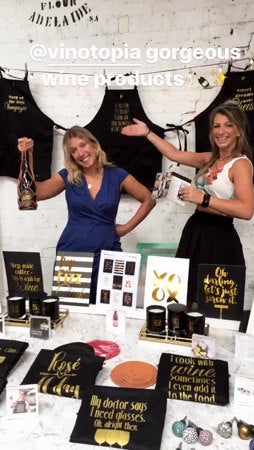
YEAH, WE GOT THAT
"Vinotopia Is for Winos. The latest concept to
arrive at Legacy Hall in Plano is a purported utopia
for wine lovers, ahem, hence the name Vinotopia."—Rosin
Saez, D Magazine (4/28/21)
❖❖❖
Sponsored by

Any of John Mariani's books below may be ordered from amazon.com.
 The Hound in Heaven
(21st Century Lion Books) is a novella, and
for anyone who loves dogs, Christmas, romance,
inspiration, even the supernatural, I hope you'll find
this to be a treasured favorite. The story
concerns how, after a New England teacher, his wife and
their two daughters adopt a stray puppy found in their
barn in northern Maine, their lives seem full of promise.
But when tragedy strikes, their wonderful dog Lazarus and
the spirit of Christmas are the only things that may bring
his master back from the edge of despair.
The Hound in Heaven
(21st Century Lion Books) is a novella, and
for anyone who loves dogs, Christmas, romance,
inspiration, even the supernatural, I hope you'll find
this to be a treasured favorite. The story
concerns how, after a New England teacher, his wife and
their two daughters adopt a stray puppy found in their
barn in northern Maine, their lives seem full of promise.
But when tragedy strikes, their wonderful dog Lazarus and
the spirit of Christmas are the only things that may bring
his master back from the edge of despair. WATCH THE VIDEO!
“What a huge surprise turn this story took! I was completely stunned! I truly enjoyed this book and its message.” – Actress Ali MacGraw
“He had me at Page One. The amount of heart, human insight, soul searching, and deft literary strength that John Mariani pours into this airtight novella is vertigo-inducing. Perhaps ‘wow’ would be the best comment.” – James Dalessandro, author of Bohemian Heart and 1906.
“John Mariani’s Hound in Heaven starts with a well-painted portrayal of an American family, along with the requisite dog. A surprise event flips the action of the novel and captures us for a voyage leading to a hopeful and heart-warming message. A page turning, one sitting read, it’s the perfect antidote for the winter and promotion of holiday celebration.” – Ann Pearlman, author of The Christmas Cookie Club and A Gift for my Sister.
“John Mariani’s concise, achingly beautiful novella pulls a literary rabbit out of a hat – a mash-up of the cosmic and the intimate, the tragic and the heart-warming – a Christmas tale for all ages, and all faiths. Read it to your children, read it to yourself… but read it. Early and often. Highly recommended.” – Jay Bonansinga, New York Times bestselling author of Pinkerton’s War, The Sinking of The Eastland, and The Walking Dead: The Road To Woodbury.
“Amazing things happen when you open your heart to an animal. The Hound in Heaven delivers a powerful story of healing that is forged in the spiritual relationship between a man and his best friend. The book brings a message of hope that can enrich our images of family, love, and loss.” – Dr. Barbara Royal, author of The Royal Treatment.
 |
The Encyclopedia of American Food and Drink by John F. Mariani (Bloomsbury USA, $35) Modesty forbids me to praise my own new book, but let me proudly say that it is an extensive revision of the 4th edition that appeared more than a decade ago, before locavores, molecular cuisine, modernist cuisine, the Food Network and so much more, now included. Word origins have been completely updated, as have per capita consumption and production stats. Most important, for the first time since publication in the 1980s, the book includes more than 100 biographies of Americans who have changed the way we cook, eat and drink -- from Fannie Farmer and Julia Child to Robert Mondavi and Thomas Keller. "This book is amazing! It has entries for everything from `abalone' to `zwieback,' plus more than 500 recipes for classic American dishes and drinks."--Devra First, The Boston Globe. "Much needed in any kitchen library."--Bon Appetit. |
"Eating Italian will never be the same after reading John Mariani's entertaining and savory gastronomical history of the cuisine of Italy and how it won over appetites worldwide. . . . This book is such a tasteful narrative that it will literally make you hungry for Italian food and arouse your appetite for gastronomical history."--Don Oldenburg, USA Today. "Italian
restaurants--some good, some glitzy--far
outnumber their French rivals. Many of
these establishments are zestfully described
in How Italian Food Conquered the World, an
entertaining and fact-filled chronicle by
food-and-wine correspondent John F.
Mariani."--Aram Bakshian Jr., Wall Street
Journal.
"Equal parts
history, sociology, gastronomy, and just
plain fun, How Italian Food Conquered the
World tells the captivating and delicious
story of the (let's face it) everybody's
favorite cuisine with clarity, verve and
more than one surprise."--Colman Andrews,
editorial director of The Daily
Meal.com. "A fantastic and fascinating
read, covering everything from the influence
of Venice's spice trade to the impact of
Italian immigrants in America and the
evolution of alta cucina. This book will
serve as a terrific resource to anyone
interested in the real story of Italian
food."--Mary Ann Esposito, host of PBS-TV's
Ciao
Italia. "John Mariani has written the
definitive history of how Italians won their
way into our hearts, minds, and
stomachs. It's a story of pleasure over
pomp and taste over technique."--Danny Meyer,
owner of NYC restaurants Union Square
Cafe, The Modern, and Maialino.
|
 |
 |
 |
 |
 |
 |
 Everett Potter's Travel Report:
Everett Potter's Travel Report: 
 Eating Las
Vegas JOHN CURTAS has been covering
the Las Vegas food and restaurant scene
since 1995. He is the co-author of EATING LAS
VEGAS – The 50 Essential Restaurants (as
well as the author of the Eating Las
Vegas web site: www.eatinglasvegas.
He can also be seen every Friday morning as
the “resident foodie” for Wake Up With the
Wagners on KSNV TV (NBC) Channel 3 in
Las Vegas.
Eating Las
Vegas JOHN CURTAS has been covering
the Las Vegas food and restaurant scene
since 1995. He is the co-author of EATING LAS
VEGAS – The 50 Essential Restaurants (as
well as the author of the Eating Las
Vegas web site: www.eatinglasvegas.
He can also be seen every Friday morning as
the “resident foodie” for Wake Up With the
Wagners on KSNV TV (NBC) Channel 3 in
Las Vegas.
MARIANI'S VIRTUAL GOURMET
NEWSLETTER is published weekly. Publisher: John Mariani. Editor: Walter Bagley. Contributing Writers: Christopher Mariani,
Robert Mariani, Misha Mariani, John A. Curtas, Gerry Dawes, Geoff Kalish,
and Brian Freedman. Contributing
Photographer: Galina Dargery. Technical
Advisor: Gerry
McLoughlin.
If you wish to subscribe to this
newsletter, please click here: http://www.johnmariani.com/subscribe/index.html
© copyright John Mariani 2021

